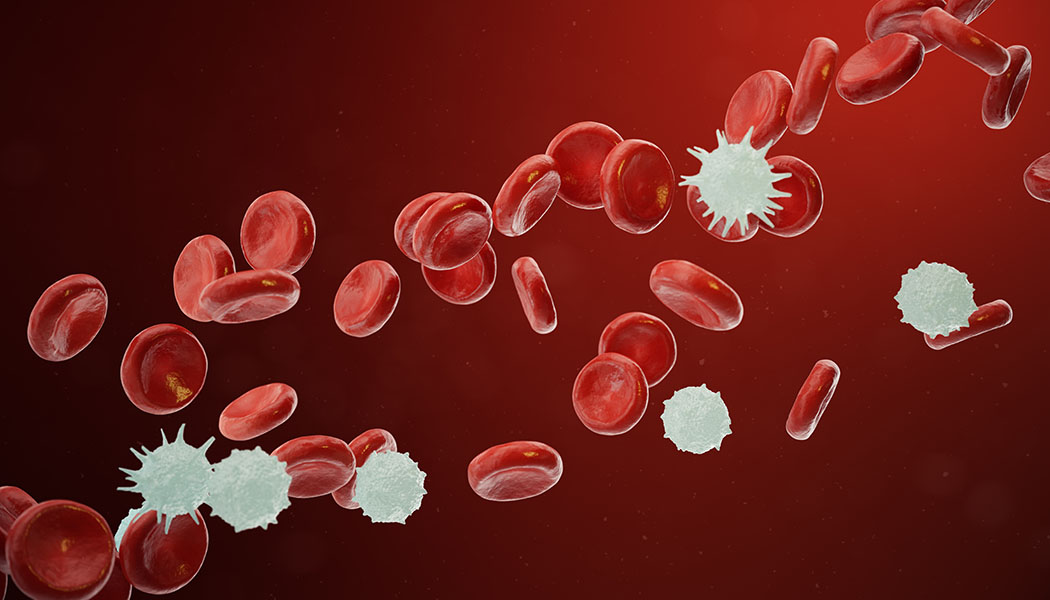September is Blood Cancer Awareness Month
To bring attention to leukemia and lymphoma, Congress in 2010 designated September as Blood Cancer Awareness Month. These diseases are diagnosed in 14,000 people monthly within the United States. But with advances in treatment and technologies yielding earlier and earlier detection, the overall five-year relative survival rate for leukemia has more than quadrupled since 1960.
But these statistics are painted in broad strokes and can foster a false sense of security. There are numerous types of leukemia and lymphoma whose facts and figures are not nearly so rosy as, for instance, the promising 86% five-year-survival rate for Hodgkin lymphoma. Non-Hodgkin lymphoma is a far more lethal form of blood cancer, and while the survival rate has grown considerably since the 1990s, approximately 20,140 deaths — 11,450 men and 8,690 women — from this disease will still occur this year. Acute myeloid leukemia (AML), which itself has several subtypes, all of which affect both blood and bone marrow, is expected to kill 10,00 in 2018. Patients over 60 tend not to respond well to AML treatment, and the overall five-year survival rate is just 26%.
Causal agents for both are not entirely understood. While family history can lead both patients and doctors to early and correct diagnoses, leukemia is also linked to exposure to high doses of ionizing radiation, the chemical benzene or a very particular gene mutation dubbed the “Philadelphia chromosome.” In a leukemia subtype called chronic myelogenous leukemia, or CML, part of the DNA from one chromosome moves to another chromosome. This change results in the bone marrow making an enzyme, tyrosine kinase, that causes too many stem cells to become white blood cells.
As to lymphoma, many risk factors are similar to those associated with leukemia, including benzene, radiation exposure and family history. But too, previous viral infections such as Epstein Barr and hepatitis C can elevate the likelihood of developing the condition.
Several National Foundation for Cancer Research-funded scientists, including Doctors Frederick Alt and Curt Civin, have dedicated their careers to fighting blood cancers.
Alt’s work on a DNA repair mechanism called “non-homologous end joining” highlights a process protecting against translocations, a type of genetic damage that leads to cancers including lymphoma and leukemia. Civin’s breakthrough discovery of CD34+ lympho-hematopoietic stem-progenitor cells opened new directions in research and accelerated the first successful stem cell therapy that was developed from basic research.
But as with any disease, early detection and treatment is key. Persistent fatigue, night sweats, and unexpected weight loss are all symptoms of lymphoma. But the hallmark of the disease, and the symptom that should send a person to his or her doctor, is a painless swelling of the lymph nodes in the neck, armpits, and groin. Likewise, fever, chills and weight loss associated with leukemia are so general as to suggest other, more likely, conditions, but those combined with bone pain, frequent nosebleeds and infections, and tiny red spots on the skin (called petechiae) are a warning of a far more dire situation.
The sooner patients and doctors can connect these dots, the better the chances are that the blood cancer, if indeed present, can be eradicated successfully.
References:
- https://www.cancer.gov/types/leukemia/patient/cml-treatment-pdq
- https://www.cancer.net/cancer-types/lymphoma-hodgkin/statistics
- https://www.cancer.net/cancer-types/lymphoma-non-hodgkin/statistics
- https://llsorg.prod.acquia-sites.com/facts-and-statistics/facts-and-statistics-overview/facts-and-statistics
- https://www.mayoclinic.org/diseases-conditions/lymphoma/symptoms-causes/syc-20352638












